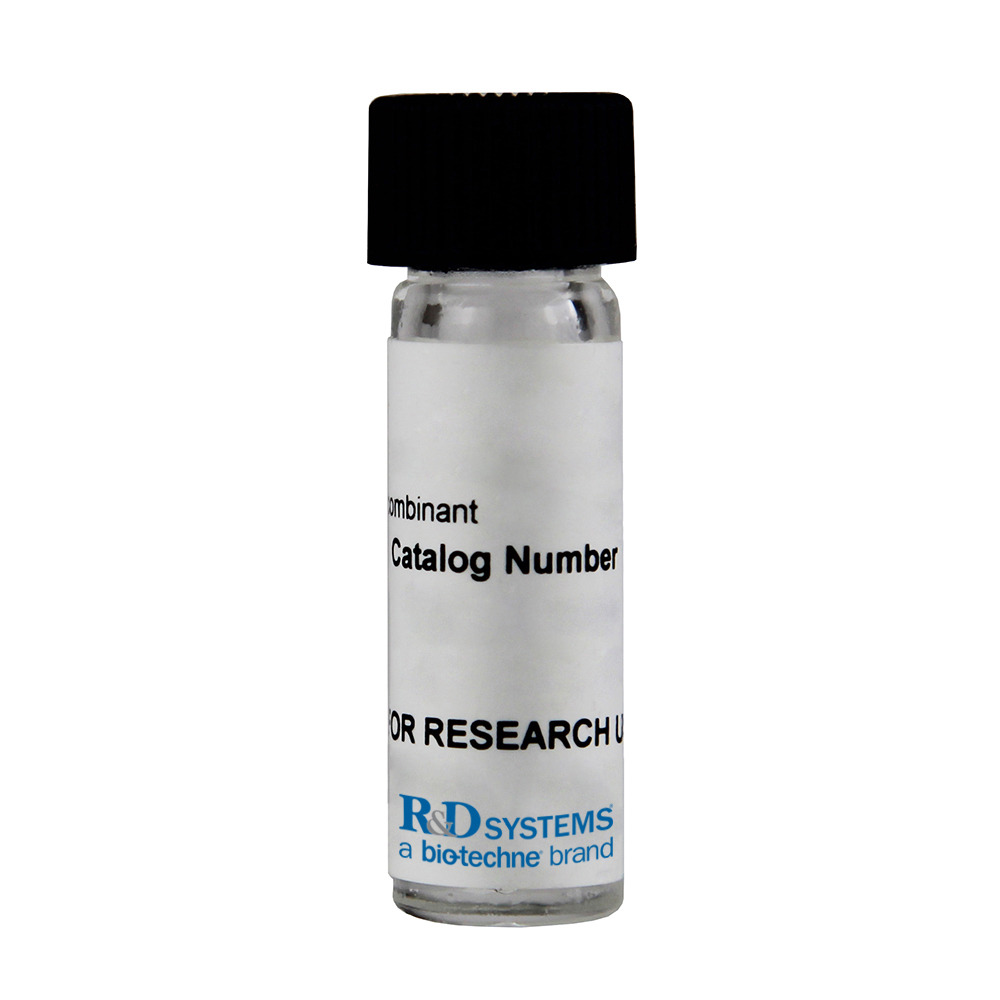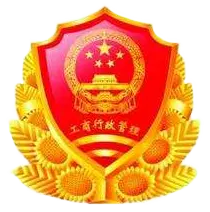

 下载产品说明书
下载产品说明书 下载SDS
下载SDS 用小程序,查商品更便捷
用小程序,查商品更便捷



 收藏
收藏
 对比
对比 咨询
咨询Carrier Free
CF stands for Carrier Free (CF). We typically add Bovine Serum Albumin (BSA) as a carrier protein to our recombinant proteins. Adding a carrier protein enhances protein stability, increases shelf-life, and allows the recombinant protein to be stored at a more dilute concentration. The carrier free version does not contain BSA.
In general, we advise purchasing the recombinant protein with BSA for use in cell or tissue culture, or as an ELISA standard. In contrast, the carrier free protein is recommended for applications, in which the presence of BSA could interfere.
2915-IL
| Formulation | Lyophilized from a 0.2 μm filtered solution in PBS with BSA as a carrier protein. |
| Reconstitution | Reconstitute at 100 μg/mL in sterile PBS containing at least 0.1% human or bovine serum albumin. |
| Shipping | The product is shipped at ambient temperature. Upon receipt, store it immediately at the temperature recommended below. |
| Stability & Storage: | Use a manual defrost freezer and avoid repeated freeze-thaw cycles.
|
2915-IL/CF
| Formulation | Lyophilized from a 0.2 μm filtered solution in PBS. |
| Reconstitution | Reconstitute at 100 μg/mL in sterile PBS. |
| Shipping | The product is shipped at ambient temperature. Upon receipt, store it immediately at the temperature recommended below. |
| Stability & Storage: | Use a manual defrost freezer and avoid repeated freeze-thaw cycles.
|
Recombinant Mouse IL-19 Protein Summary
Product Specifications
Leu25-Ala176, with an N-terminal Met
Analysis
Background: IL-19
Interleukin 19 (IL-19) is a member of the IL-10 family of cytokines (1). The IL-10 family is a class II alpha -helical collection of cytokines that contains two groups, a viral homolog and a cellular homolog group. Within the cellular homolog group, there are two additional groupings, one which uses IL-10 R2 as a signal transducing receptor (IL-10, IL-22 and IL-26), and one which uses IL-20 R2 as a signal transducing receptor (IL-19, IL-20 and IL-24) (2 - 4). Mouse IL-19 is synthesized as a 176 amino acid (aa) precursor that contains a 24 aa signal sequence and a 152 aa mature region (5). Based on human studies, it is expected to be secreted as a glycosylated monomer, 35 - 45 kDa in size (2, 6, 7). IL-19 is unusual in that it contains seven amphipathic helices (2, 4, 8). Mature mouse IL-19 shares 69% aa sequence identity with the mature human IL-19, and 85% and 68% aa identity to unpublished Genbank sequences for rat and canine IL-19, respectively. Although mouse IL-19 is active on human cells, human IL-19 is not active on mouse cells (5). IL-19 expression is limited to activated keratinocytes and monocytes, with a possible contribution from B cells (6, 9, 10). IL-19 binds a receptor complex consisting of the IL-20 receptor alpha (also known as IL-20 R1) and the IL-20 receptor beta (IL-20 R2) (3, 4, 11, 12). This receptor complex is also shared by IL-20 and IL-24. Notably, IL-19 is reported to actually bind to IL-20 R2, which is generally considered to be only the signal transducing receptor subunit (7, 13). Functionally, it has been reported that IL-19 both will and will not induce IL-6 and TNF production by monocytes (5, 14). It does, however, seem to drive T-helper cell differentiation towards a Th2 response, inducing both IL-10 and production of itself (5, 14, 15).
- Fickenscher, H. et al. (2002) Trends Immunol. 23:89.
- Pestka, S. et al. (2004) Annu. Rev. Immunol. 22:929.
- Zdanov, (2004) Curr. Pharm. Des. 10:3873.
- Gallagher, G. et al. (2004) Int. Immunopathol. 4:615.
- Laio, Y.-C. et al. (2002) J. Immunol. 169:4288.
- Gallagher, G. et al. (2000) Genes Immun. 1:442.
- Pletnev, S. et al. (2003) Biochemistry 42:12617.
- Chang, C. et al. (2003) J. Biol. Chem. 278:3308.
- Romer, J. et al. (2003) J. Invest. Dermatol. 121:1306.
- Wolk, K. et al. (2002) J. Immunol. 168:5397.
- Dumoutier, L. et al. (2001) J. Immunol. 167:3545.
- Parrish-Novak, J. et al. (2002) J. Biol. Chem. 277:47517
- Preimel, D. and H. Sticht (2004) J. Mol. Model. 10:290.
- Jordan, W.J. et al. (2005) Eur. J. Immunol. 35:1576.
- Laio, S.-C. et al. (2004) J. Immunol. 173:6712.









 危险品化学品经营许可证(不带存储) 许可证编号:沪(杨)应急管危经许[2022]202944(QY)
危险品化学品经营许可证(不带存储) 许可证编号:沪(杨)应急管危经许[2022]202944(QY)  营业执照(三证合一)
营业执照(三证合一)